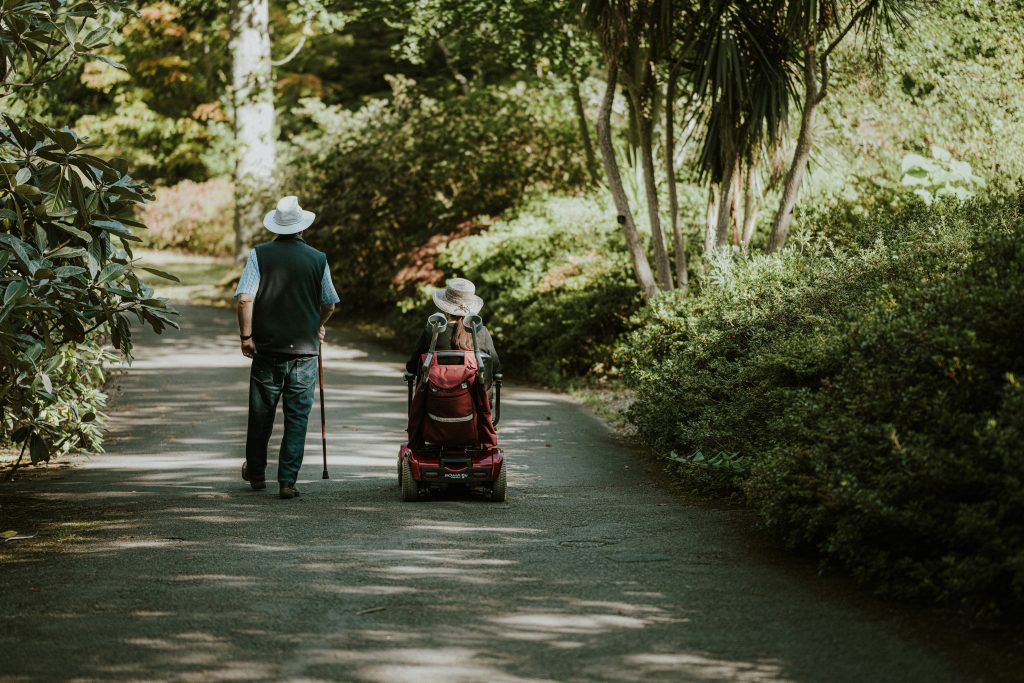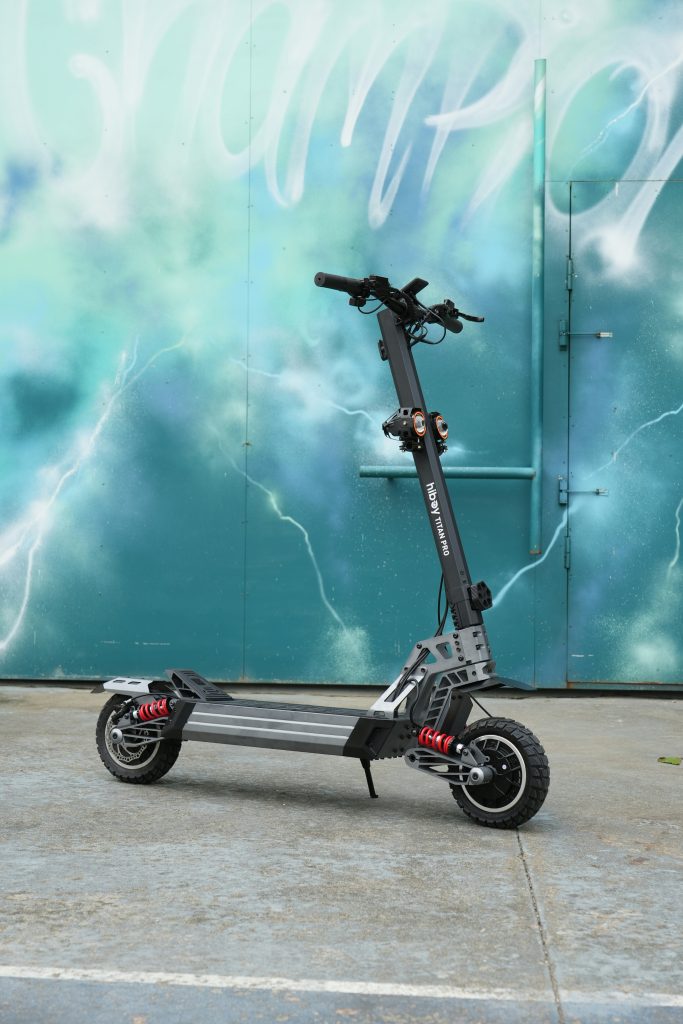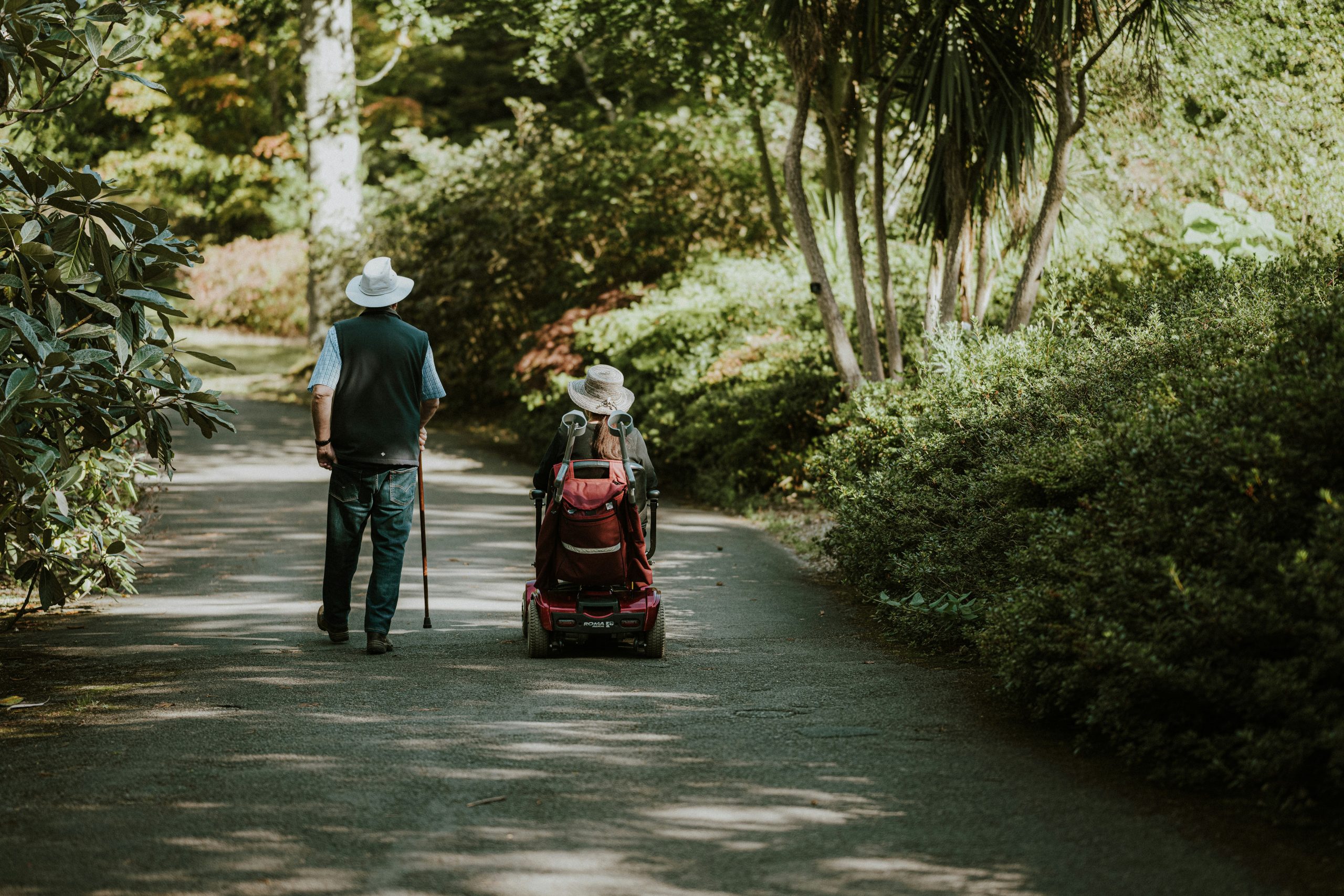Are you planning to rent a mobility scooter and want to be sure you choose the right one for your needs?

What Should I Look For When Renting A Mobility Scooter?
Renting a mobility scooter can make travel, errands, and outings much more comfortable. You’ll want to pick a scooter that matches your lifestyle, the places you’ll go, and your physical needs. Below you’ll find clear guidance to help you make a confident choice.
Why Renting Might Be a Good Option for You
Renting gives you flexibility without long-term commitment. You can try a model before buying, use a scooter for a short-term recovery or vacation, and avoid maintenance and storage responsibilities.
Types of Mobility Scooters
Knowing the main types helps you narrow options quickly. Each type is designed for specific uses and abilities.
Travel/Lightweight Scooters
Travel scooters are compact, often foldable or easily disassembled. They’re ideal if you’ll be hopping in and out of cars or need to bring the scooter on public transport.
- Great for short trips and travel.
- Tend to have shorter range and lower weight capacity.
3-Wheel Scooters
Three-wheel scooters are very maneuverable, with a tighter turning radius. They’re often the best choice for indoor use or tight spaces.
- Easier to turn around corners and inside buildings.
- Can be less stable at high speeds or on rough terrain compared to four-wheel versions.
4-Wheel Scooters
Four-wheel scooters offer greater stability and often better suspension for outdoor use.
- Better for uneven surfaces, longer distances, and higher speeds.
- Slightly larger turning radius than 3-wheel models.
Heavy-Duty/Hybrids
These scooters are built for higher weight capacities, rough terrain, and longer ranges. They’re suitable if you need extra power or durability.
- Heavier and less portable, but more robust.
- Often provide more comfortable seating and better climb capability.
All-Terrain Models
If you’ll be on grass, gravel, trails, or steep grades, all-terrain scooters have larger, knobby tires and stronger motors.
- Designed for outdoor adventures and unpaved surfaces.
- Less suitable for tight indoor spaces or air travel.
Compare Scooter Types (Quick Reference)
| Feature / Type | Travel / Lightweight | 3-Wheel | 4-Wheel | Heavy-Duty | All-Terrain |
|---|---|---|---|---|---|
| Portability | High | Moderate | Low | Low | Low |
| Indoor maneuverability | Good | Excellent | Good | Fair | Poor |
| Outdoor stability | Fair | Moderate | Good | Excellent | Excellent |
| Typical range | Short | Short–Moderate | Moderate–Long | Long | Moderate–Long |
| Weight capacity | Low–Moderate | Moderate | Moderate–High | High | High |
How You’ll Use the Scooter
Think about where you’ll take the scooter most often. Your primary use drives nearly every decision: range, speed, seat comfort, and portability.
Short Trips and Indoor Use
If you’ll be using a scooter mainly indoors or for short errands, prioritize compact size, tight turning radius, and ease of transport.
Long Distances and Outdoor Use
For extended outings or outdoor surfaces, choose a scooter with longer battery range, higher top speed, and robust suspension.
Travel and Vacations
If you’ll travel by car or plane, look for a travel scooter that’s FAA-compliant (if you plan to fly) or can be broken down easily for transport.
Range and Battery Life
Range is one of the most critical features. The listed range is often optimistic, so plan conservatively.
What Affects Range
Battery age and condition, weight carried, terrain, speed, and weather will all reduce the effective range. You should choose a scooter whose realistic range comfortably covers your daily needs plus a safety buffer.
Tips for Battery Choice
- Ask about the battery’s age and maintenance history when renting.
- If you’ll be away from charging sources, consider a scooter with removable batteries so you can swap or charge conveniently.
Speed and Performance
Scooter speed matters for safety and practicality. Rental scooters typically range from 4 to 8 mph.
- Lower speeds are safer indoors and in crowded areas.
- Higher speeds are useful for covering long distances outdoors but increase stopping distance and reduce maneuverability in tight spots.
Weight Capacity and Your Body Type
Match the scooter’s weight capacity to your body weight plus any items you’ll carry.
Why Weight Capacity Matters
Exceeding capacity strains the motor and battery, reduces range and performance, and can void rental agreements. Choose a scooter with a comfortable margin above your weight.
Seat Comfort and Adjustability
You’ll spend time sitting, so seat comfort is essential. Evaluate seat size, cushioning, back support, and whether the armrests and seat swivel or adjust.
Seat Types
- Bucket seats provide more lateral support.
- Captains’ seats often offer more cushioning and armrests.
Adjustability
A seat that adjusts for height and distance from the tiller gives better posture and easier control.
Tiller and Controls
The tiller is your steering column. You’ll want controls that are intuitive and within easy reach.
Considerations
- Are the controls simple and clearly labeled?
- Can you adjust the angle of the tiller for a comfortable reach?
- Do the brakes feel responsive?
- Is there a clear speed control, and does it include a variable throttle?

Turning Radius and Maneuverability
If you’ll be in grocery stores, malls, or constrained spaces, test the turning radius. Three-wheel scooters usually succeed in tight turns, but modern four-wheel scooters sometimes match them.
Suspension and Ride Smoothness
Suspension reduces jarring on uneven surfaces. If you’ll use the scooter on cobblestones, gravel, or long outdoor paths, opt for models with good suspension or larger wheels.
Tires: Solid vs Pneumatic
- Solid tires are puncture-proof and low-maintenance but provide a firmer ride.
- Pneumatic (air-filled) tires give better shock absorption and traction but require occasional maintenance and risk flats.
Choose based on the terrain and your preference for comfort versus maintenance.
Braking Systems
Reliable brakes are non-negotiable. Most scooters use electromagnetic brakes that are automatic when you release the throttle.
- Test stopping from a safe walking speed.
- Check for a hand or lever emergency brake if you need extra control.
Lights, Reflectors, and Visibility
If you’ll be out at dawn, dusk, or at night, ensure the scooter has lights and reflective surfaces. Indicators, horns, and mirrors improve safety in busy areas.

Climbing Ability and Ground Clearance
If you’ll face hills, curbs, or ramps, check the scooter’s maximum incline rating and ground clearance.
- Higher torque motors and better clearance help with curbs and sloped driveways.
- Discuss typical routes with the rental company so they can recommend suitable models.
Portability and Transport
If you need to load the scooter into a vehicle or take it on trips, portability is key.
Features That Help
- Quick-release batteries
- Foldable tillers or folding frames
- Ability to disassemble into lighter pieces
- Compact overall dimensions
Ask whether the scooter fits in your vehicle trunk and how much it weighs when disassembled.
Storage and Indoor Fit
Measure doorways, storage closets, and intended transport spots. Confirm the scooter’s width and length so it fits through your home’s doors and in elevators or public restrooms.
Accessories and Add-Ons
Accessories can make your rental more functional. Common items include:
- Baskets and luggage racks
- Cup holders and phone mounts
- Weather covers and umbrellas
- Oxygen tank or cane holders
- Seat covers and cushions
Ask which accessories come with the rental and which are available at extra cost.
Insurance and Liability
Check what insurance or liability coverage the rental company provides. You’ll want to know:
- Is damage protection included, or do you need to buy it?
- Who is responsible for repairs or replacement if the scooter is damaged while rented?
- Are you liable for theft, and is theft coverage offered?

Rental Terms: Duration, Fees, and Deposits
Review the rental agreement carefully. Look for details on:
- Daily, weekly, and monthly rates
- Delivery and pickup fees
- Security deposit amount and refund conditions
- Late return penalties and extensions
- Mileage or usage limits (some rentals may impose limits)
Cost Examples
Prices vary by region and model. Typical ranges might be:
- Lightweight travel scooters: moderate daily or weekly fees
- Full-size scooters: higher daily or weekly fees
- Long-term monthly rentals: can be cost-effective but read the fine print
Ask for a written estimate that includes all fees so you won’t be surprised.
Maintenance and On-Call Support
Find out what help is available if something goes wrong.
- Is there 24/7 support or a local technician?
- What is the response time for breakdowns?
- Can you exchange the scooter if it becomes unserviceable during your rental?
Reliable support ensures minimal downtime.
Sanitation and Cleaning
Especially for rentals, cleanliness matters. Confirm the scooter will be cleaned and sanitized before delivery.
- Ask what cleaning protocols the company follows.
- If you have allergies or sensitivities, request details about cleaning products used.
Trial and Test Ride
Always ask for a trial or short test ride before committing. You want to make sure you feel safe and comfortable.
What to Test
- Start and stop smoothly
- Turn radius and ease of steering
- Comfort of the seat for 10–15 minutes
- Visibility of controls and readability of the battery gauge
- Stability on slight inclines and over small bumps
Safety Considerations and Training
If you’re unfamiliar with powered mobility devices, request a brief safety orientation. Rental companies often provide instructions on:
- Proper mounting and dismounting
- Safe operation on ramps and curb cuts
- Emergency procedures and how to use the horn or lights
- How to secure the scooter in a vehicle

Accessibility and Venue Policies
Confirm that the places you’ll visit are scooter-friendly. Some venues have restrictions on powered mobility devices or specific routes.
- Call ahead to restaurants, museums, or tour providers if you plan longer outings.
- If you’ll be flying, check airline policies and whether the scooter is allowed through TSA and gate-check processes.
Preparing for Weather
If rain, snow, or extreme temperatures are likely, ask about weather protection accessories and how weather affects battery performance and range.
- Cold weather can reduce battery life significantly.
- Water-resistant covers and boots for joints can keep the scooter working in light rain, but check manufacturer limits for water exposure.
Returning the Scooter
Understand return procedures to avoid fees:
- Where and when do you return it?
- Is there a cleaning or damage inspection?
- Are there additional charges for late returns or unclean equipment?
Questions to Ask the Rental Company
Having a list of questions ensures you won’t overlook anything. Here are essential ones to ask:
- What is the scooter’s realistic range per charge given my weight and intended use?
- What is the weight capacity and total weight of the scooter when disassembled?
- Is delivery and pickup included, and what are the fees?
- What is your repair and replacement policy if the scooter fails during my rental?
- Are batteries removable for charging indoors or a different location?
- Are safety belts, lights, and a horn included?
- What cleaning and sanitation practices do you use between rentals?
- Is damage and theft insurance available, and what does it cover?
Checklist Before You Accept the Scooter
Use this practical checklist when inspecting the scooter at delivery or pickup.
| Item | What to Look For |
|---|---|
| Battery charge | Should be near full for first use; ask battery age. |
| Tire condition | No cracks, sufficient tread for pneumatic tires. |
| Brakes | Responsive and engaging without delay. |
| Lights/horn | All functioning and visible. |
| Seat comfort | Adjusts properly and locks in place. |
| Tiller and controls | Smooth movement and easy-to-read gauges. |
| Accessories | Confirm included basket, charger, etc. |
| Documentation | Rental agreement, emergency contact info, instructions. |
Common Pitfalls to Avoid
Avoid common mistakes that can ruin your rental experience.
- Choosing the wrong scooter for the terrain (e.g., a travel model for rough trails).
- Underestimating battery range—always allow a safety buffer.
- Not testing the scooter before leaving the rental location.
- Failing to get clear documentation on insurance and responsibility for damage.
- Ignoring return policies and deadlines.
Cost-Saving Tips
You don’t always have to pay more for what you need.
- Rent long-term (weekly or monthly) if needed for an extended period; longer rates are often cheaper per day.
- Ask about discounts for medical use, veterans, or senior programs.
- Compare local rental shops and national chains for the best rates and service levels.
When Renting vs Buying Makes Sense
Rent when:
- Your need is temporary (surgery recovery, short-term travel).
- You want to try out models before buying.
- You need a scooter occasionally and don’t want maintenance or storage responsibilities.
Consider buying when:
- You’ll use the scooter daily or for years.
- You need a custom fit or specialized features not commonly available for rental.
- Long-term cost savings from purchasing outweigh rental fees.
How to Test Comfort and Fit Yourself
Spend at least 10–20 minutes on the scooter in conditions similar to your usual use. Check:
- How comfortable the seat is after 10–15 minutes.
- Whether the tiller adjusts to a natural steering position.
- If your feet rest comfortably and aren’t cramped.
- Whether armrests support you without pushing your shoulders forward.
Emergency Procedures and Support Info
Make sure you know:
- Who to call if the scooter malfunctions (phone number and hours).
- How to safely stop and disable the scooter in an emergency.
- Whether the company offers roadside assistance or same-day swaps.
Legal and Regulatory Notes
Be aware of local laws and venue rules. Some regions have specific rules about where mobility scooters can be used (sidewalks vs roads) or speed restrictions.
Final Checklist Before You Sign
Confirm these items in writing:
- Model and serial number of rented scooter
- Rental period and total cost (all fees included)
- Delivery/pickup details and fees
- Insurance and damage policies
- Support phone numbers and hours
- Documentation of battery condition and included accessories
Summary: Choosing the Right Scooter for You
When renting a mobility scooter, balance comfort, performance, and practicality. Consider where you’ll use it, how far you’ll travel, and how portable it must be. Test-ride, confirm support and insurance, and get everything in writing. With the right questions and a careful check, you’ll find a scooter that keeps you moving safely and confidently.
Frequently Asked Questions
Can I rent a scooter for a plane trip?
Yes, many travel scooters are designed to be taken on planes after checking airline policies and verifying FAA rules. Confirm battery type and whether the airline allows the particular model.
What happens if the scooter breaks down?
Ask the rental company about emergency support—most reputable companies provide repair or replacement quickly. Make sure you have the contact number and understand the process.
Do I need a medical prescription to rent?
Usually no, but some companies may request a doctor’s note for certain models or extended rentals. It depends on local regulations and the rental provider.
How long does it take to charge a battery?
Charging times vary. Deep-cycle batteries typically need 6–12 hours for a full charge, depending on battery size and charger type. Fast chargers can reduce time but ask before renting.
Can someone else drive the scooter while it’s rented to me?
Check the rental agreement; many allow secondary drivers if listed in the contract, but you may need to inform the company and provide identification for additional operators.
If you have specific venues, distances, or health considerations you’re planning around, tell me and I’ll help you pick the right category of scooter and suggest precise questions to ask your rental provider.



